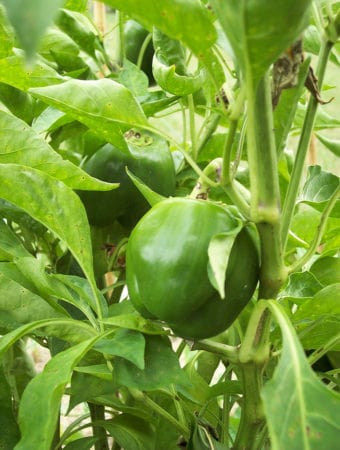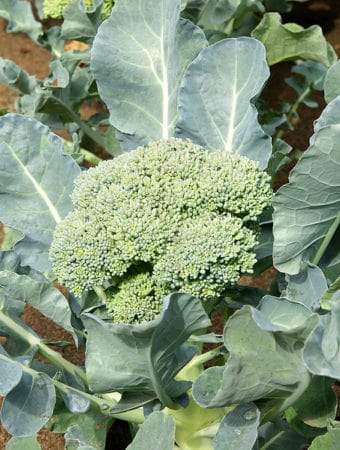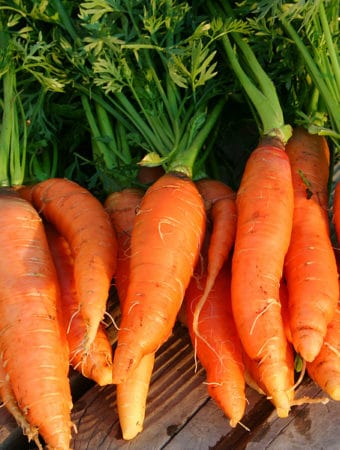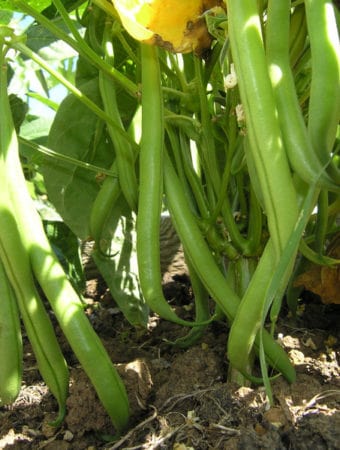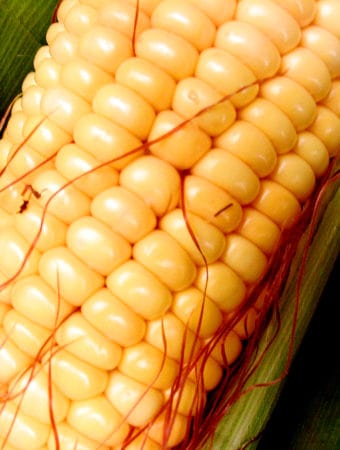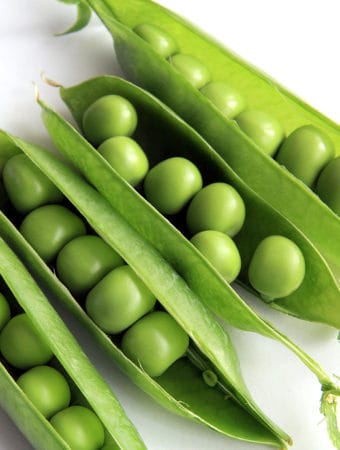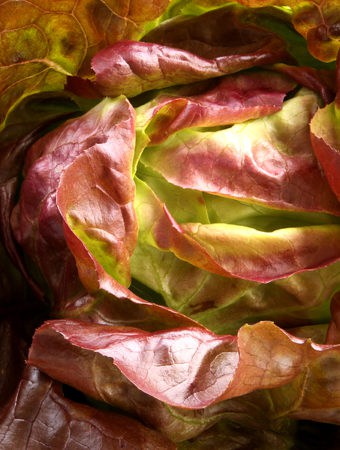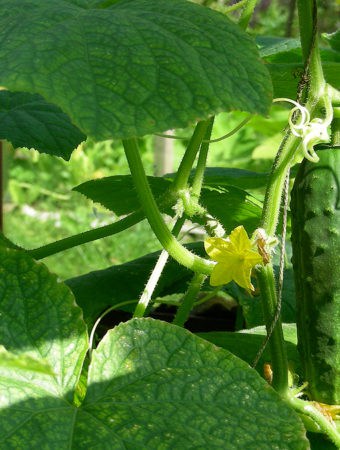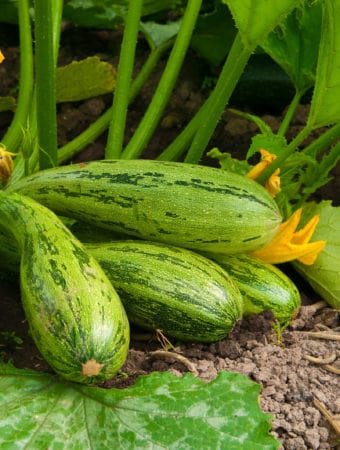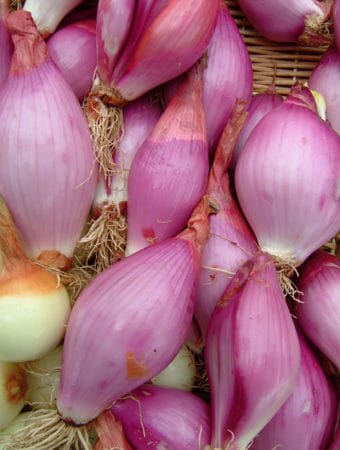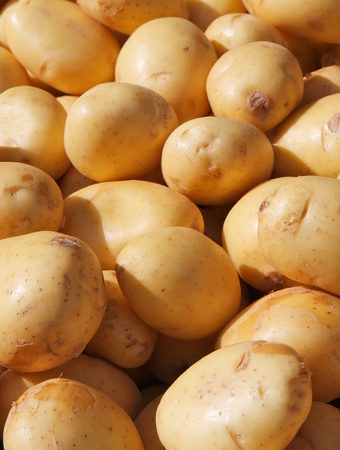Okra can be grown with ease wherever sweet corn is grown. Okra is often associated with the South–think gumbo soup, but it grows well in northern gardens as well. Okra grows in average soil; start okra when the soil and air temperature are right for planting corn
For okra growing tips see Okra Growing Success Tips at the bottom of this post.
Okra is generally insect and disease free but occasionally problems will arise.
Good Products for Pest and Disease Control at Amazon:
- Garden Safe Snail and Slug Bait
- Bonide Sulfur Fungicide
- Monterey BT Caterpillar Killer
- Neem Bliss 100-% Cold Pressed Neem Oil
- Safer Brand Insect Killing Soap
- PyGanic Botanical Insecticide
Here are common okra-growing problems with cures and controls.
Seeds and seedlings problems
Seeds do not germinate; plants do not emerge
Soil is not warm enough for germination; soil temperature must be at least 70°F for okra to germinate. Pre-soak seeds in water for 24 hours before sowing.
Leaf problems
Water-soaked spots on leaves; spots become circular with gray centers
Leaf spot is a fungus disease. Plant-resistant varieties. Rotate crops. Keep the garden free of plant debris. Apply copper dust or liquid copper spray every 7 to 10 days. Plant in well-drained soil. Rotate with other crops.
Black water-soaked blotches on stems and leaves
Anthracnose is a fungus disease that spreads in high humidity and rainfall. Leaves may wither and fall. The plant may die back. Remove and discard infected plants. Avoid working in the garden when it is wet which can result in the spread of spores. Plant in well-drained soil. Spray or dust with a fixed copper- or sulfur-based fungicide every 7 to 10 days.
Small rusty-orange to reddish brown or black blisters or pustules on stems and leaves
Rust is a fungus disease. It is most prevalent in humid regions. Prune away infected leaves or plants. Plant-resistant varieties. Water evenly; avoid overhead watering.
Leaves are yellowish, curl under, and become deformed; shiny specks on leaves
Aphids are tiny, oval, and yellowish to greenish pear-shaped insects that colonize the undersides of leaves. They leave behind sticky excrement called honeydew which can turn into a black sooty mold. Use insecticidal soap.
Leaves yellow; tiny white-winged insects around plants
Whiteflies will congregate on the undersides of leaves and fly up when disturbed. Remove infested leaves and the whole plant if infestation is serious. Introduce beneficial insects into the garden.
White, powdery spots on leaves and pods
Powdery mildew is caused by fungal spores. Spores germinate on dry plant surfaces when the humidity is high; spores do not germinate on wet leaves. Common in late summer or fall but does not result in the loss of the plant. Avoid water stress. Prune away infected leaves and pods. Keep the garden free of plant debris. Rotate crops.
Whole plant problems
Plants stunted, leaves yellow, roots decayed
Fusarium root or stem rot is a fungal disease that favors warm soil. Remove infected plants and plant debris that harbor fungus. Rotate crops. Rotate crops regularly. Solarize the soil in late spring or summer.
Leaves turn yellow and then brown from the bottom up; the plant loses vigor
Root-knot nematode is a microscopic eelworm that attacks roots. Rotate crops. Remove old plant debris from the garden.
Flower problems
Flowers and buds drop before pods are set
Weather is too hot or temperatures are fluctuating. Temperatures greater than 95°F can cause flowers and buds to drop. Temperatures too cool can cause flower and bud drop.
Plant flowers but pods do not form
Heat and cold can interfere with pollination. Pollination will be poor if temperatures rise above 90°F or drop below 55°F. Too little light, water stress, and excess nitrogen also inhibit pod formation. Plant in fun sun, in compost-rich soil, and keep the soil evenly moist.
Pod problems
Holes in pods
Corn earworm is a brown-headed caterpillar with lengthwise stripes to 2 inches long; the adult is a night-flying moth with brownish or olive wings and bright green eyes. The worm will tunnel into pods. Handpick caterpillars and destroy them. Use commercial traps. Dust with Sevin.
Deformed pods
The southern green stink bug is a light green bug to ½-inch long. Bug sucks sap from leaves and pods causing them to become twisted and deformed. Spray with insecticidal soap. Dust with sabadilla.
Pods are woody and tough
Okra should be picked just a few days after flowering. Pick pods that are 1½ to 2 inches long. Pick pods daily.
Okra growing success tips
Planting
Plant okra in full sun. Okra grows best in light, deeply worked soil rich in organic matter. Add aged compost to the planting bed before sowing or transplanting. Pre-soak seeds before planting; start seeds indoors to give them a head start.
Planting time
Sow okra seeds or set out transplants after all danger of frost is past when the soil is at least 60°F.
Care
Keep the garden weed free; mulch to suppress weeds. Hand-pull weeds so as not to disturb roots. Side dress okra with aged compost after planting and again when plants start to set pods. Keep okra evenly moist, it can go nearly but not completely dry. In very hot regions, give okra new life at midseason by pruning stalks back to 2 inches above the secondary buds. This will allow plants to send out new growth and flower a second time in the fall. Fertilize okra with compost tea after pruning.
Harvest
Harvest pods when they are young and tender. Wear gloves and long sleeves; okra is covered with spines that can irritate the skin. Pods are ready for harvest a just few days after the plant blooms. Cut pods when they are 2 to 4 inches long, do not let pods become tough; harvest every other day. Use pods immediately after harvest.
Also of interest:
Seven Ways to Cook and Serve Okra
Okra Growing Problems: Troubleshooting
Vegetable Garden Diseases Problem Solver
Vegetable Garden Organic Weed Control



